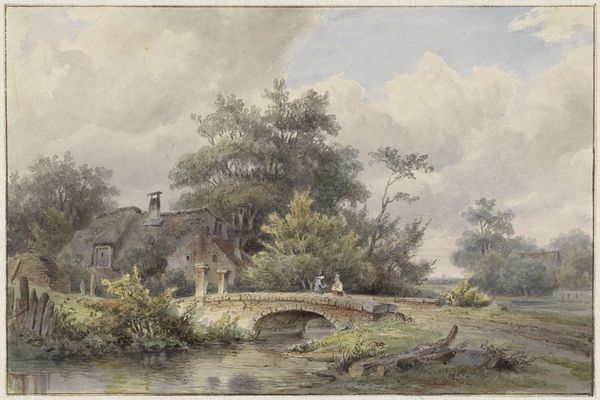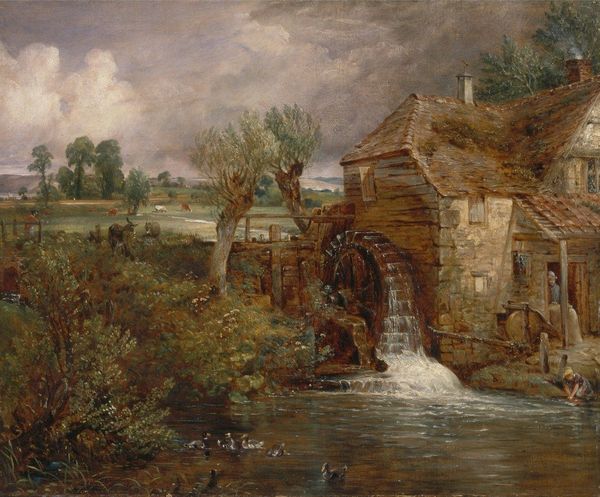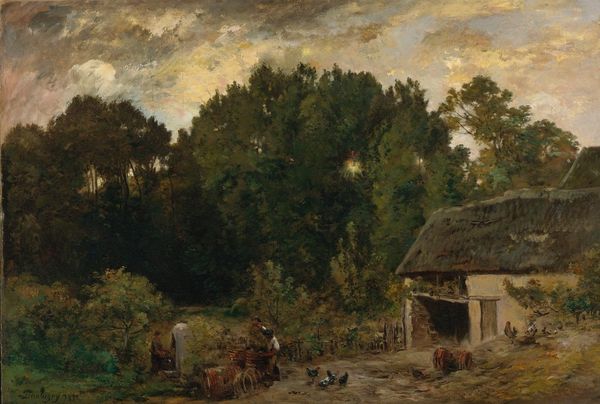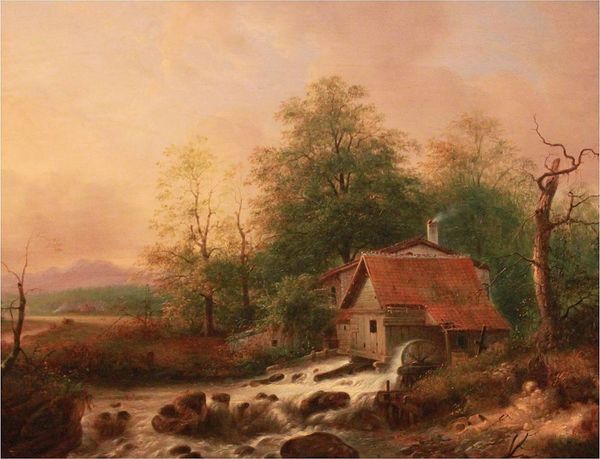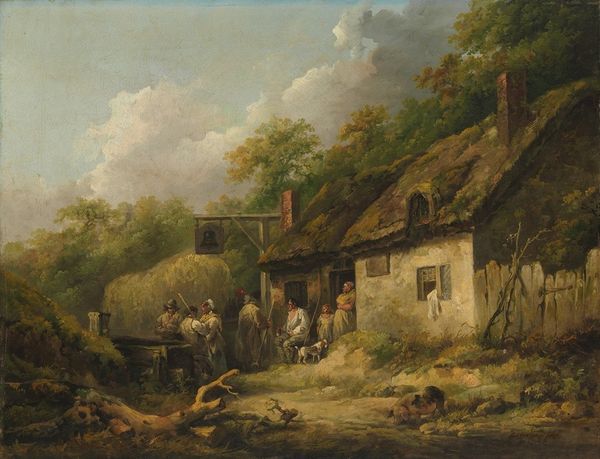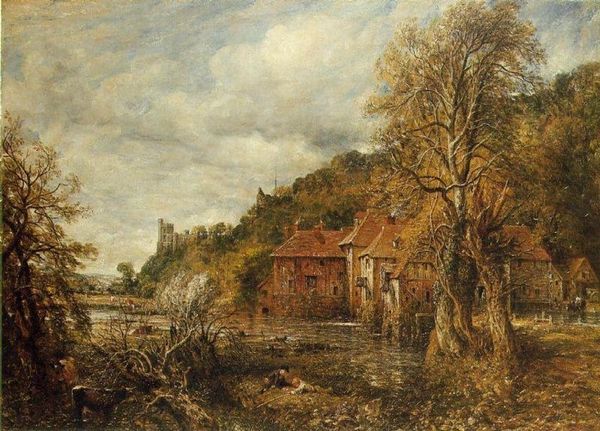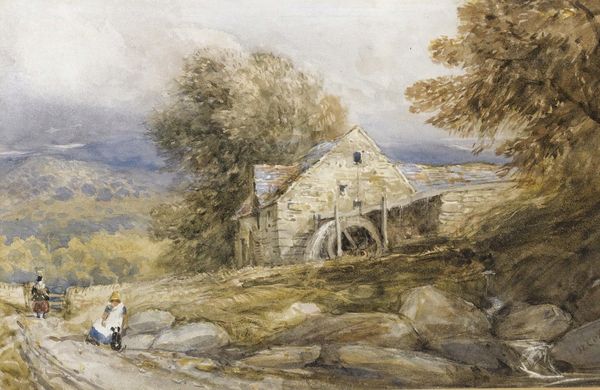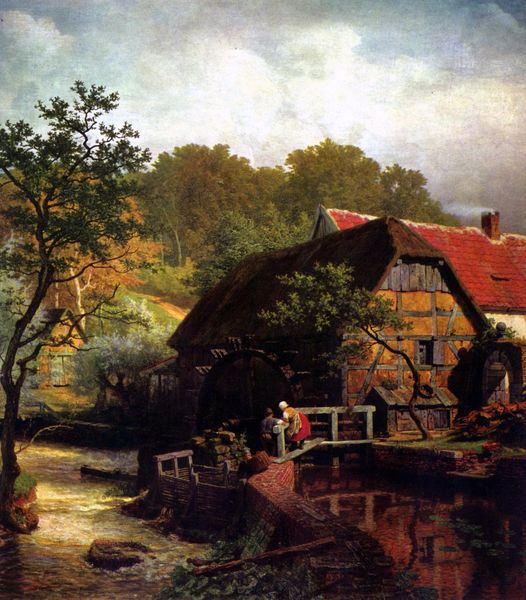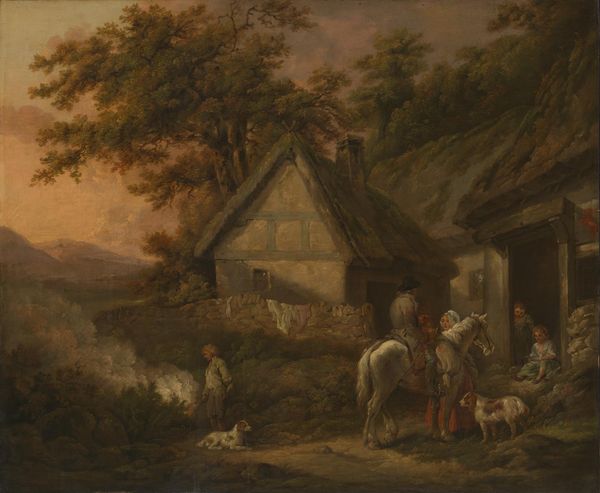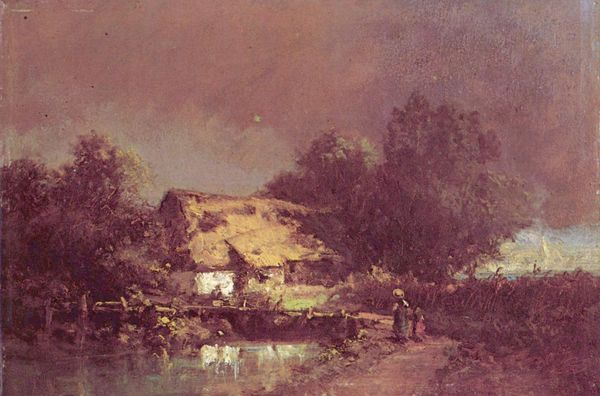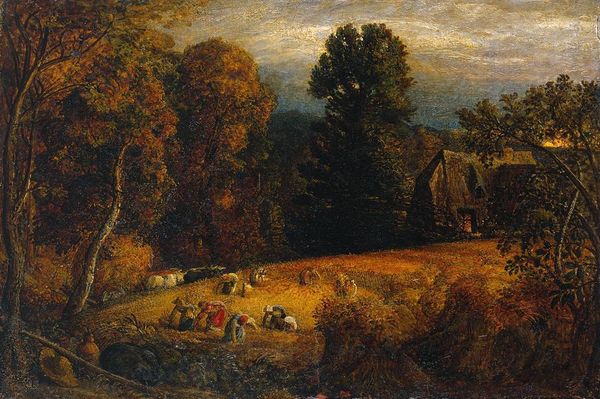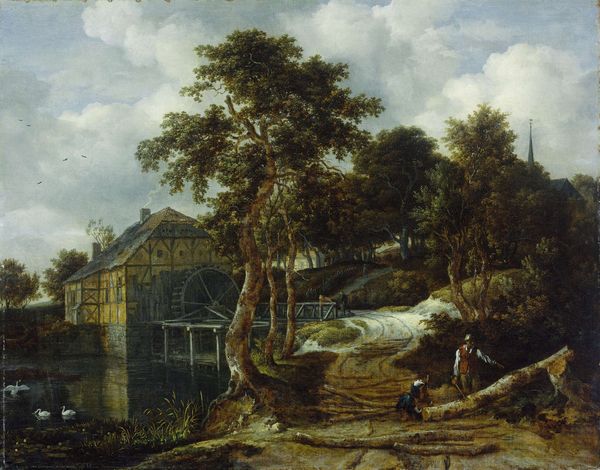
Copyright: Public Domain: Artvee
Editor: So, this is "The Old Mill," a charcoal drawing by Jean-François Millet, created sometime between 1866 and 1870. It feels incredibly dense, almost claustrophobic with all the foliage. What strikes you most about it? Curator: Initially, the distribution of light. Note the strong chiaroscuro effect. How does the handling of light and shadow contribute to the overall structure of the composition? Observe the subtle gradations of tone, from the almost imperceptible greys in the sky to the solid darks of the foliage. This contributes greatly to the mood. Editor: Yes, there’s a distinct contrast. The mill itself seems almost secondary, emerging from the darkness, with light playing off its surface. Why might Millet have chosen this compositional approach, obscuring the main subject? Curator: The density serves as more than just a backdrop. It also plays a critical role in defining the form and mass of the mill itself. See how the darkness pushes the planes of the building forward? The texture is also particularly interesting, created solely through the layering of the charcoal. What impact does that have on your reading? Editor: The layering creates a sense of depth and complexity, despite the limited color palette. It's almost like Millet is sculpting with shadow and light. The details feel less important than the overall impression. Curator: Precisely. It’s about form, not mimesis. We perceive depth and volume, all within a unified visual plane. Editor: That’s fascinating; I was too caught up in the… mood, I guess, to notice how cleverly the values are working structurally. Curator: By focusing on the formal elements of art, we gain new insight and can thus begin a critical interpretation of the symbolic and cultural meaning within the composition.
Comments
No comments
Be the first to comment and join the conversation on the ultimate creative platform.
